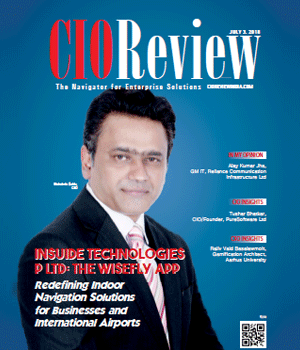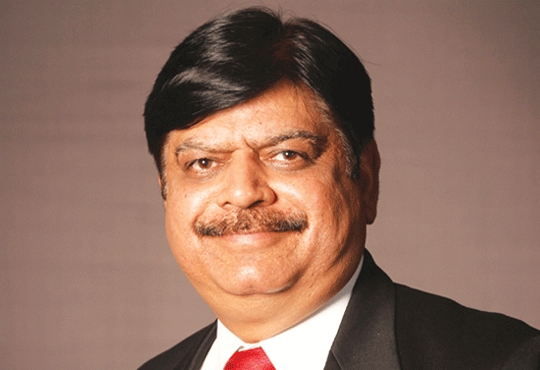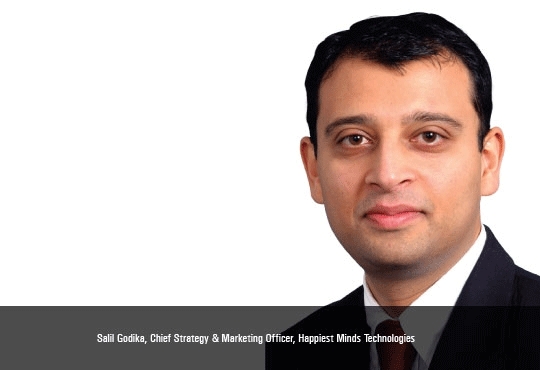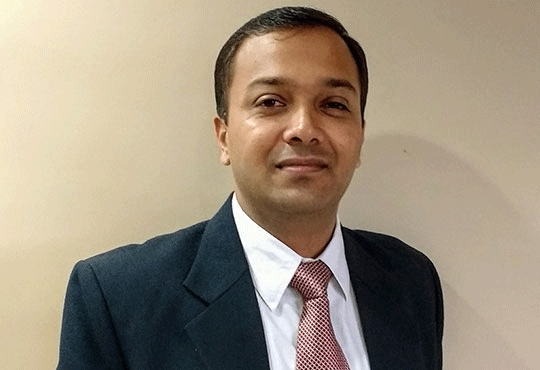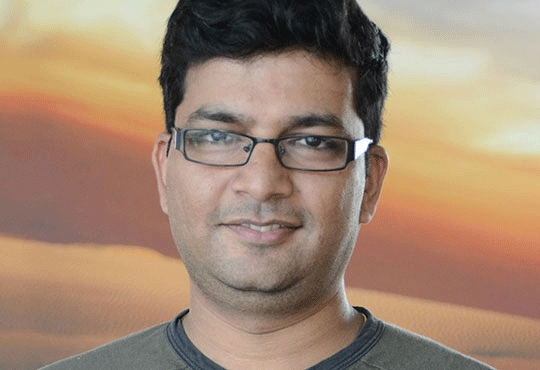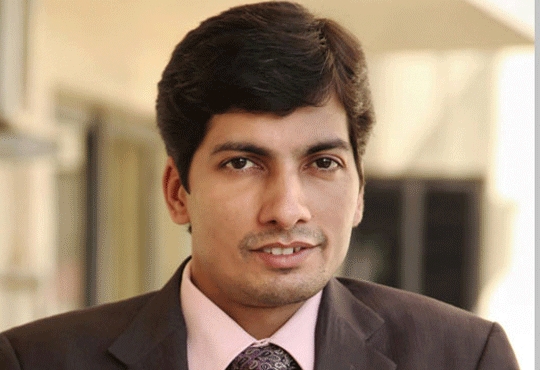
How Will Wearable Technology Transform Lifestyles By 2020?
Kapil Sharma, Chief Sales Offi cer(CSO) - International Business, Collabera Inc | Thursday, 26 July 2018, 06:16 IST
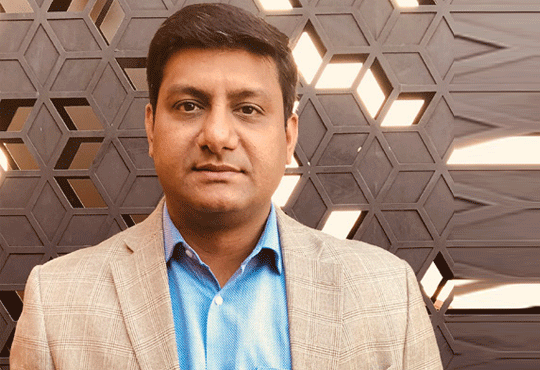 The wave of wearable technology has some way transformed the lifestyle of every individual for a decade. Wearable technology refers to a smart device that can comfortably be worn on the human body. They are the convergence of computer and communication technologies. The uses of wearable technologies are far reaching, thus, pushing the boundaries.
The wave of wearable technology has some way transformed the lifestyle of every individual for a decade. Wearable technology refers to a smart device that can comfortably be worn on the human body. They are the convergence of computer and communication technologies. The uses of wearable technologies are far reaching, thus, pushing the boundaries.
Companies have flooded the market with various wearable technologies that come in all shapes, sizes, and forms like fitness trackers, smart watches, smart clothing, smart eyewear, smart accessory, navigational devices, and many more. According to Forbes, the advent of wear- able technology has led the market to reach $34 billion by 2020.
Healthcare
Wearable technology is opening new frontiers in the healthcare sector. The demand for this technology has been astounding and is projected to exceed at a CAGR of 55%, as forecasted by a market research firm “Euromoni tor”. Wearable technology has become the best-selling consumer electronics product and has the greatest potential in the healthcare industry. By the end of 2018, the overall healthcare wearables market is expected to reach 130 million, while global healthcare market is expected to reach a value of over 12 billion, as cited by Markets and Markets.
"The rise of wearables from fitness trackers and AppleWatch, to Google Glass and Microsoft HoloLens, has been fueled by the innovations that tend to get faster and small"
Patients, health conscious people, and other fitness enthusiasts can now continuously monitor their own health by using wearables. With so many current uses of these devices, the wearable technology is the perfect device for healthcare. There are thousands of smart devices in healthcare that can help live a healthier and better life. With the advent of wearable devices, there are smart T-shirts to monitor glucose levels, blood pressure levels, breathing rate, heart rate, ECG monitors, and so forth. Other skin worn patches are used to accurately capture and monitor vital signs and other health-related information. These digital platforms help people make decisions to integrate physical activity and correct nourishment into their daily lives.
It is not only used to keep a self- track but also assists doctors and physicians all over the world in providing real-time access to electronic health records anywhere, with up to minutes updates. This emerging technology helps doctors learn, consult and make better decisions by accessing data from remote locations. How- ever, the full potential of this technology goes beyond assisting doctors and self-tracking. The market is yet to progress for many health related de vices and their developments. There is a significant billion dollar market potential that could save billions in costs of health care services.
This phenomenon is not only a commercial success but it is also suc- cessful in medical research projects that meet patient’s demands by pro- viding improved long-term health outcomes. User acceptability and device flexibility is a key to success and significant uptake because con- sumers are increasingly demanding convenience in all things, including their health monitoring. The sky is the limit when it comes to healthcare industry using wearable technology.
Retail
Wearable technology has revolution- ized every sector and retail has not been left behind. As we know that the fitness and health applications have emerged as the front-runners in the adoption of wearable technology and yet retail hasn’t proven a practical use, however, there are a few devel- opments that will make you re-think the future of wearable technology in the retail sector. The idea of the wear- able technology itself is enough to transform the entire ecosystem of the retail sector. This technology enables improvisations in the overall customer experience. That being said, the in- novation in the wearable technology continues to improvise the customer service from data-driven point of view. The retail wearable shipments will reach 10 million with a CAGR of 38% by 2022, as forecasted by ABI Research. According to Statista, the global retail revenue market is estimated to reach $53.2 million by 2019.
As we move towards the era of customer personalization, companies are experimenting with the idea of identifying customers as they enter retail spaces, to help create a customised and unique shopping experience for them. As customers wear the smart wristbands constantly, the data captured is incredibly precise and allows the marketers to track their shopping journey. Wearables are perhaps the most valuable to the us- ers because the data gained from the experience is integrated into an inter- operable retail ecosystem that further allows the marketers to be in touch at all times.
This technology not only helps keep a track of customer’s shopping journey but also helps reduce other hurdles. An example includes “Pay with watch”, where the smartwatch will be used as a payment device. This is beneficial for customers as it eliminates the risk of losing ATM cards and also reduces some friction from the payment process and helps reduce the queue sizes. Retail has a huge potential to intersect with the entire wearables ecosystem and will continue to transform the customer shopping lifestyle.
Technology
The need for real-time data is indispensable for the technology sector. And this requisite is fuelled further by wearables that enhance the level of connectedness and accessibility. Customers are at the centre of significance for every business and the tech nology segment is not alienated from this fact. Wearables not only impart agility and real-time access to critical information for your workforce, they also help in customer acquisition and retention by keeping your customer service, sales and marketing teams up on their toes with real-time data. Ac- cording to IDC forecasts, the global retail wearables market is expected to rise to 82.5 million by 2020, show- casing a 31% growth.
With the advent of technologies like IoT, Artificial Intelligence, Deep Learning and Machine Learning, and with the consistent innovations taking place in each of these domains, the machine human interface has been Strengthened like never be fore. This has conducive implications for the technology sector which is all set to leverage wearables to not only enhance productivity, increase user awareness, and improve working conditions, but also stimulate the innovations at a rapid pace for a consistently advancing future.
Wearables are here to stay. They will keep on enhancing themselves and our lives ever more and better ever. Their proliferation in almost every sector of our existence is the testimonial of this expectation which will evidently surge in the future. By the year 2020, wearables will be the new fashion mantra and wearable technology, the geeky craze!
Other industries are yet to penetrate the wearable technology into their operations, however, sooner this technology will transform the following sectors one after the other.
Manufacturing
The market for wearable technology is thriving as there is a need for real-time data across various industries in- cluding manufacturing. The ability of wearables to provide real-time data, as well as performance monitoring and tracking functionalities will complement growth. The wearables technology has established a connection between employees/workers and the digital platform. Wearables like see through glasses, head-mounted de vices, and wristbands are intended to enhance visual aid, assessing fatigue, and strengthening protection. Businesses are keen to incorporate industrial wearables (smart glasses and gloves, head-mounted displays, cameras, audio devices, sensors embedded into clothes) to transform the manufacturing sector into their portfolio allowing greater productivity, improved efficiency, and better working conditions.
Finance
The obvious application for wearables in finance would be stock price tickers and alerts. The technology helps investors optimize their decision-making through health improvements. With the help of wearables, the marketers can keep a track of sleep and stress levels that could impact the trading behaviour.
The role of wearable technology will grow rapidly in our lives as we become more dependent on it. The rise of wearables from fitness trackers and AppleWatch, to Google Glass and Microsoft HoloLens, has been fueled by the innovations that tend to get faster and small. If the wearable technology persists to grow at this pace in every sector, I can be sure that one day in the future, we will be wearing our technology!
CIO Viewpoint
UX- The broad picture from 'what was' to 'what...
By Kamal Sharma, CIO, Tally Solutions Pvt. Ltd.
IoT - Initiating the Next Industrial Revolution
By Vipin Kumar, Group CIO, Escorts
Creating a Tangible Impact through Collaboration
By Matt Schlabig, CIO, Worthington Industries
CXO Insights
When the Internet of Things meets Analytics
By Salil Godika, Chief Strategy & Marketing Officer, Happiest Minds Technologies
Cyber Risks: Balancing Innovation and Resilience
By Aditya Samag, VP-Cyber Risk, Marsh India Insurance Brokers
Perfect Plant Initiative Embraced with Industry...


